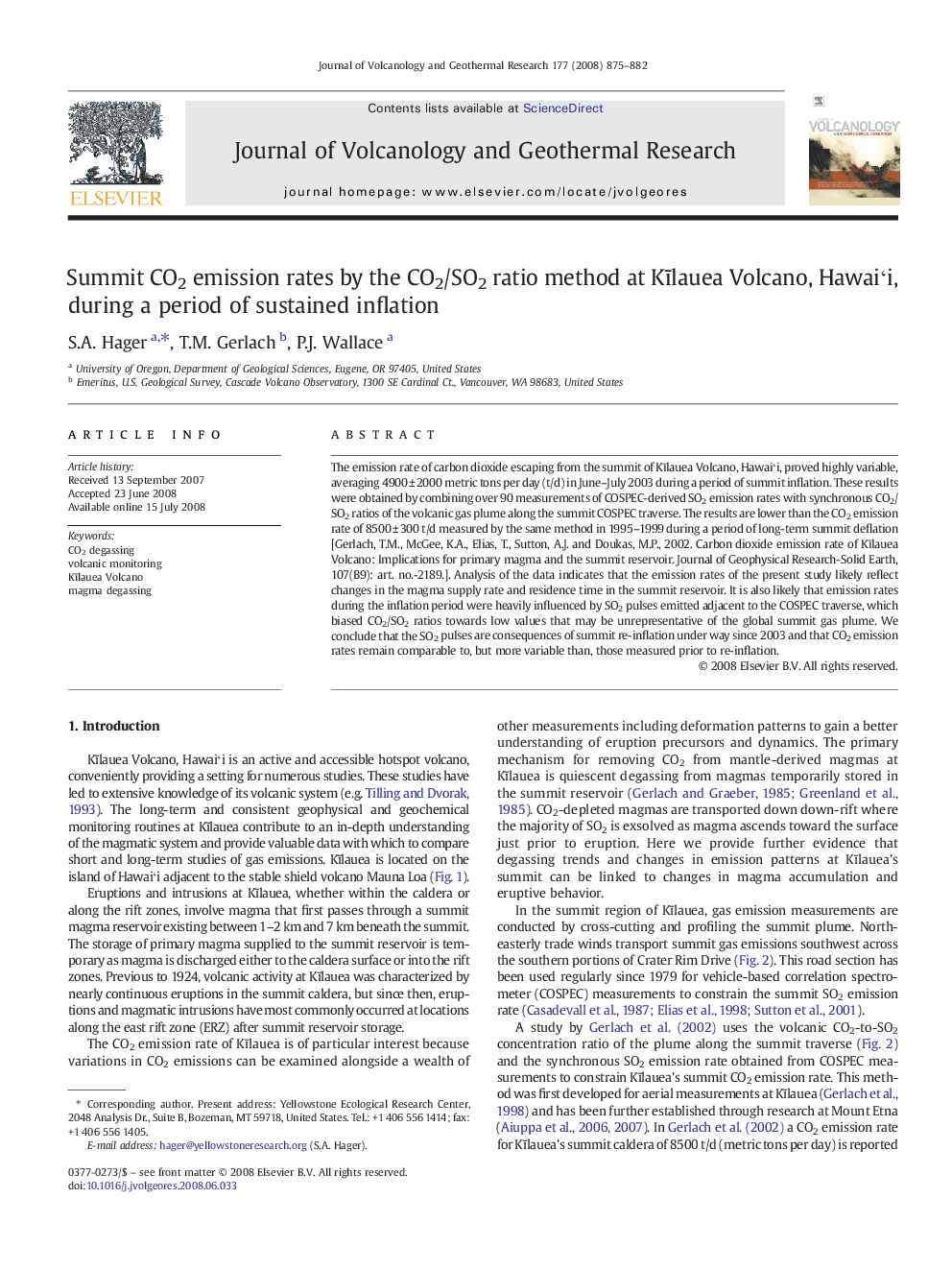| Article ID | Journal | Published Year | Pages | File Type |
|---|---|---|---|---|
| 4714572 | Journal of Volcanology and Geothermal Research | 2008 | 8 Pages |
The emission rate of carbon dioxide escaping from the summit of Kīlauea Volcano, Hawaiʻi, proved highly variable, averaging 4900 ± 2000 metric tons per day (t/d) in June–July 2003 during a period of summit inflation. These results were obtained by combining over 90 measurements of COSPEC-derived SO2 emission rates with synchronous CO2/SO2 ratios of the volcanic gas plume along the summit COSPEC traverse. The results are lower than the CO2 emission rate of 8500 ± 300 t/d measured by the same method in 1995–1999 during a period of long-term summit deflation [Gerlach, T.M., McGee, K.A., Elias, T., Sutton, A.J. and Doukas, M.P., 2002. Carbon dioxide emission rate of Kīlauea Volcano: Implications for primary magma and the summit reservoir. Journal of Geophysical Research-Solid Earth, 107(B9): art. no.-2189.]. Analysis of the data indicates that the emission rates of the present study likely reflect changes in the magma supply rate and residence time in the summit reservoir. It is also likely that emission rates during the inflation period were heavily influenced by SO2 pulses emitted adjacent to the COSPEC traverse, which biased CO2/SO2 ratios towards low values that may be unrepresentative of the global summit gas plume. We conclude that the SO2 pulses are consequences of summit re-inflation under way since 2003 and that CO2 emission rates remain comparable to, but more variable than, those measured prior to re-inflation.
